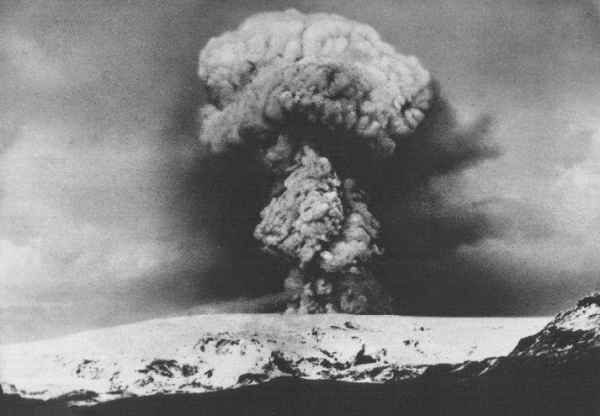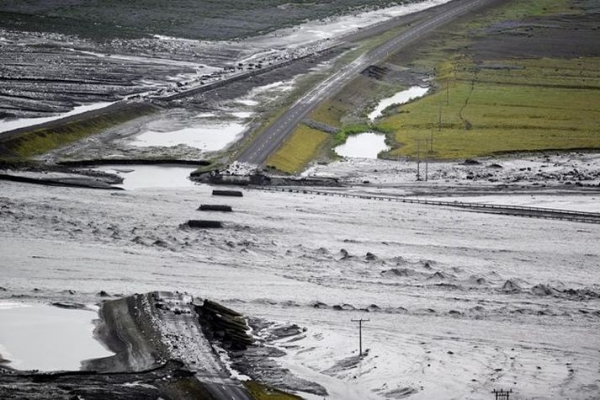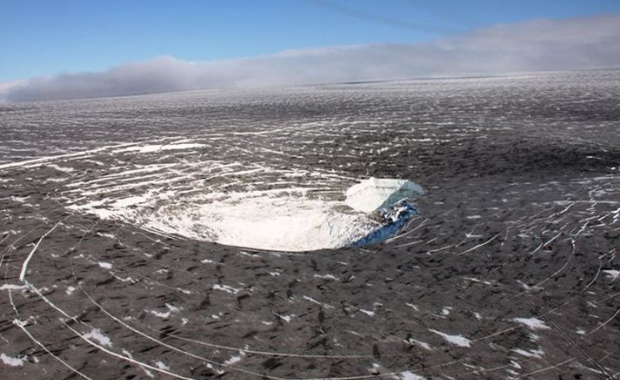It might sound strange, but scientists believe that volcanic eruptions are far more common in Iceland than previously believed. This is because eruptions which take place in sub-glacial volcanoes can go without anyone actually noticing.
Read more: Why the constant earthquakes? Iceland is slowly being torn apart

A professor of geophysics at the University of Iceland, Páll Einarsson told the local TV station Stöð 2 that recent reasearch suggests that a secret eruption like this took place in July 2011 in Katla. Four new cauldrons emerged in the glacier and a glacial outburst flood washed away a part of the Ring Road east of the village Vík on July 9 2011.
The last confirmed eruption in Katla took place in 1918. The volcano has produced a major eruption on average once every 40-80 years, and is therefore believed to be due for a major eruption any time soon. However, Páll now believes that Katla has actually erupted at least three times since 1918, in 1955, 1999 and 2011.
Read more: Holuhraun eruption was actually preceded by four sub-glacial eruptions in the Bárðarbunga volcano

Páll argues that the same week as the 2011 secret Katla eruption took place, seismic readings suggest that another small eruption took place in the Bárðarbunga system beneath Vatnajökull.
All in all Páll believes that six or seven small eruptions took place beneath Vatnajökull before the Bárðarbunga system finally produced the massive 2014 Holuhraun eruption.
None of these eruptions managed to breach the ice cap of the glacier and therefore went unnoticed. Countless other such secret eruptions could have taken place in Katla and the volcanoes of Vatnajökull over the centuries.
It might sound strange, but scientists believe that volcanic eruptions are far more common in Iceland than previously believed. This is because eruptions which take place in sub-glacial volcanoes can go without anyone actually noticing.
Read more: Why the constant earthquakes? Iceland is slowly being torn apart

A professor of geophysics at the University of Iceland, Páll Einarsson told the local TV station Stöð 2 that recent reasearch suggests that a secret eruption like this took place in July 2011 in Katla. Four new cauldrons emerged in the glacier and a glacial outburst flood washed away a part of the Ring Road east of the village Vík on July 9 2011.
The last confirmed eruption in Katla took place in 1918. The volcano has produced a major eruption on average once every 40-80 years, and is therefore believed to be due for a major eruption any time soon. However, Páll now believes that Katla has actually erupted at least three times since 1918, in 1955, 1999 and 2011.
Read more: Holuhraun eruption was actually preceded by four sub-glacial eruptions in the Bárðarbunga volcano

Páll argues that the same week as the 2011 secret Katla eruption took place, seismic readings suggest that another small eruption took place in the Bárðarbunga system beneath Vatnajökull.
All in all Páll believes that six or seven small eruptions took place beneath Vatnajökull before the Bárðarbunga system finally produced the massive 2014 Holuhraun eruption.
None of these eruptions managed to breach the ice cap of the glacier and therefore went unnoticed. Countless other such secret eruptions could have taken place in Katla and the volcanoes of Vatnajökull over the centuries.







